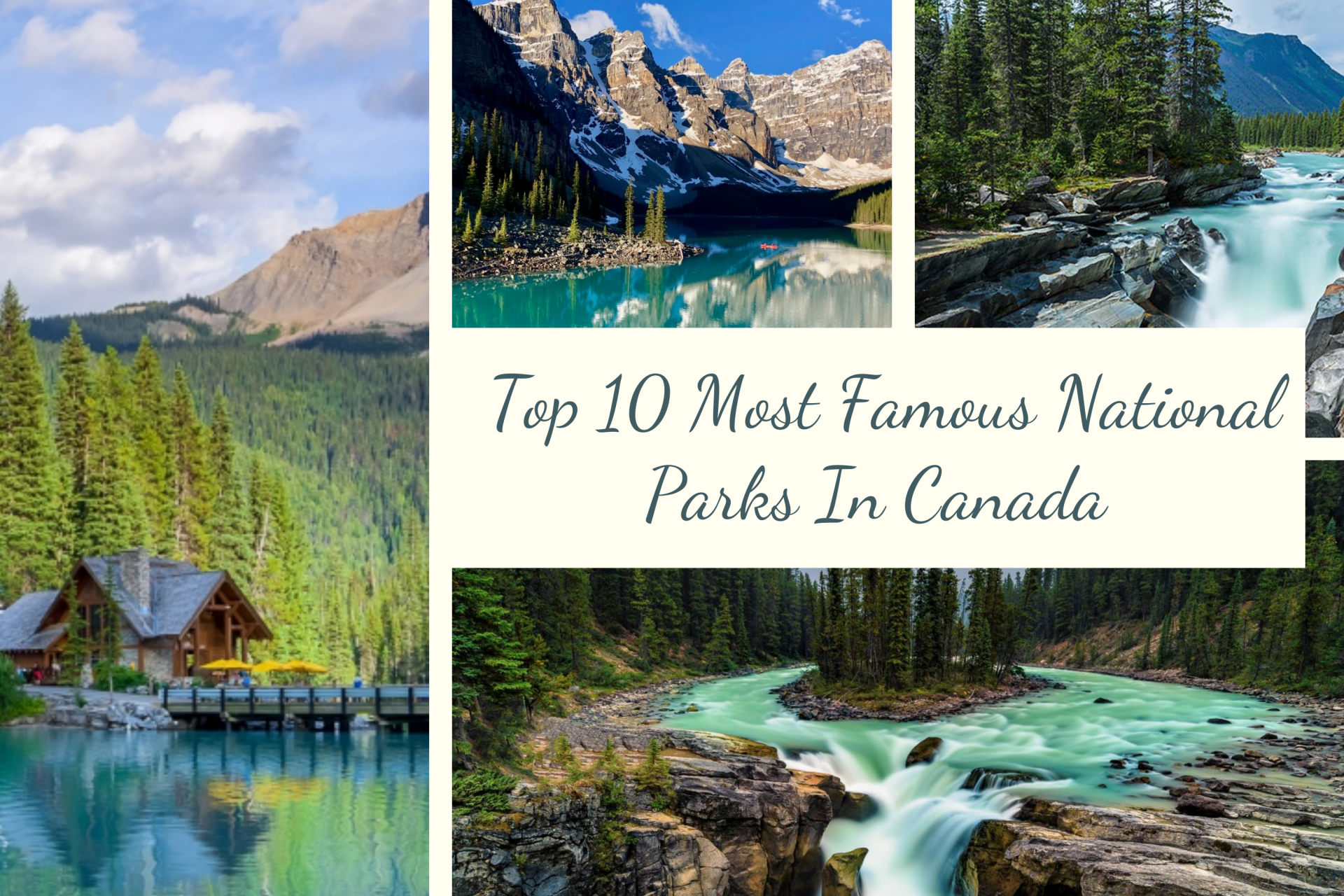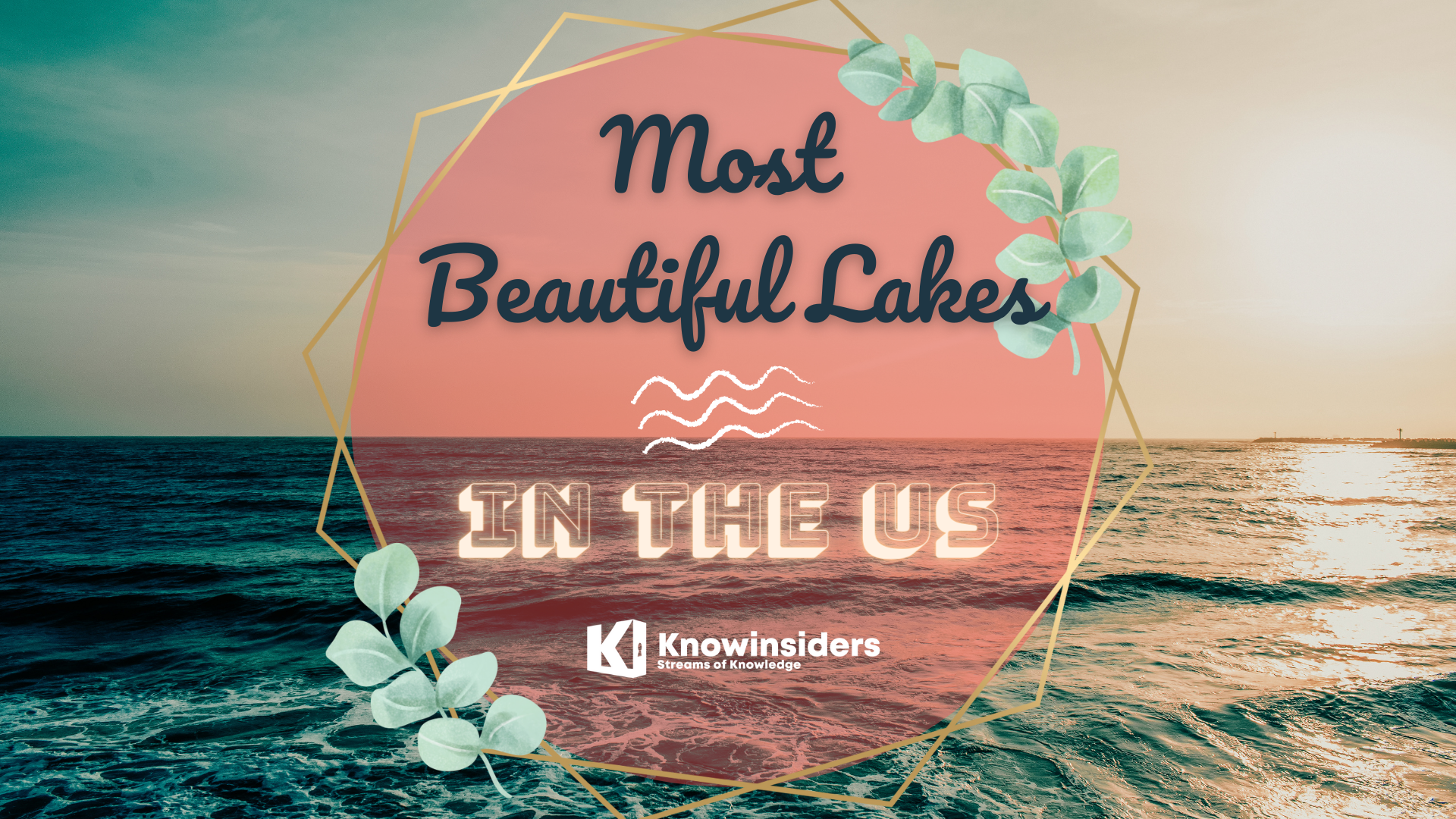Top 10 Most Beautiful National Parks in the U.S
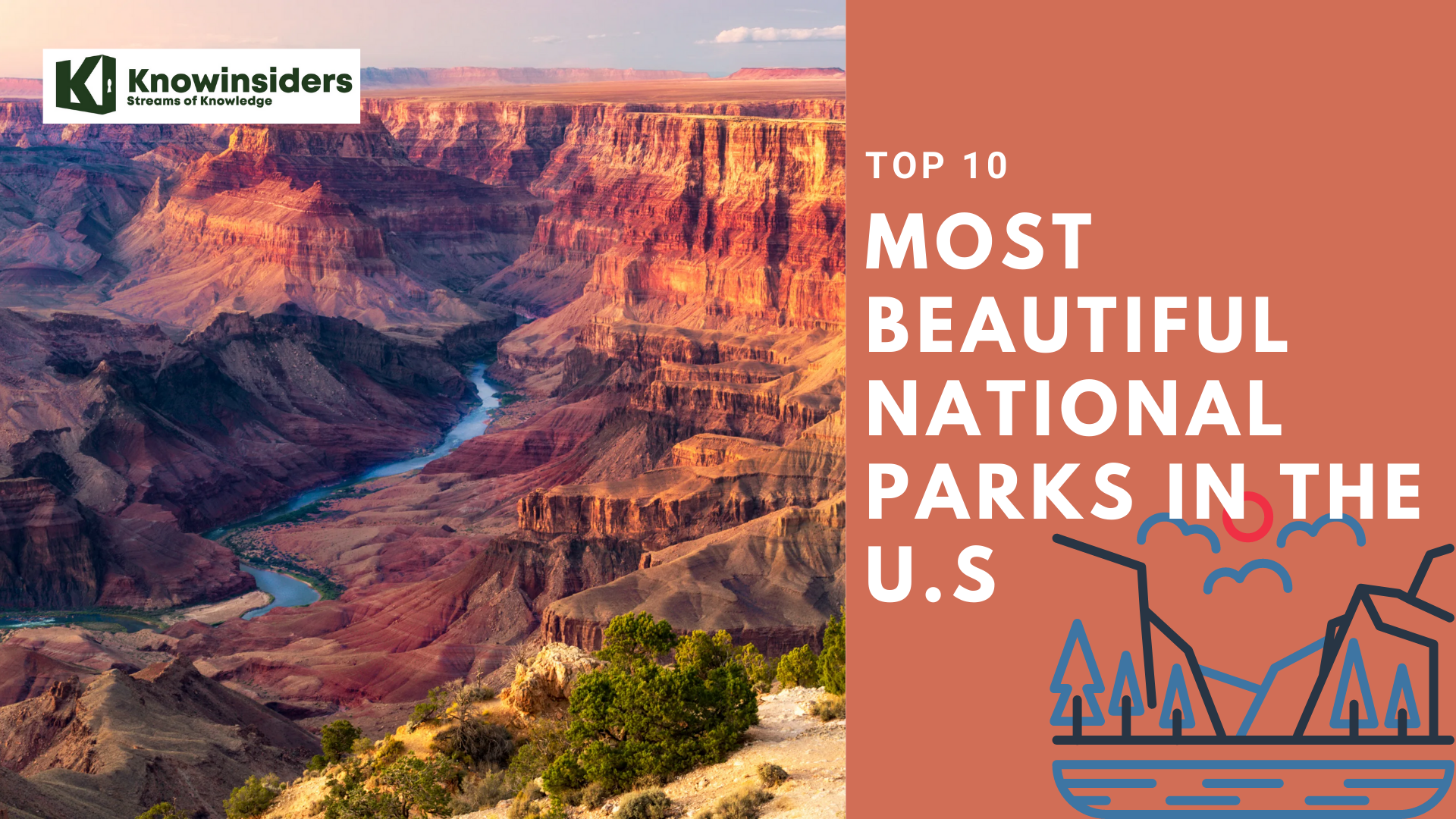 |
| Top 10 most beautiful national parks in the U.S |
| Table of Content |
The United States of America is blessed with an abundance of beautiful destinations, with the majestic National Parks at the top of most tourists' must-see lists. More than enough time can be spent outdoors in one of these magnificent parks, whether you're taking in the sights along the East Coast's shores, the wonders of the West Coast, or the Rockies.
Ranking the 63 national parks would be unfair because they all offer unique opportunities to connect with nature and culture. Here are my top ten picks for the best National Parks in the United States, based on factors like scenic beauty, wildlife diversity, and accessibility.
Discover: Top 10 Least-Visited National Parks In the US Makes You Surprised
What are the most beautiful national parks in the U.S?
10. GRAND CANYON NATIONAL PARK (ARIZONA)
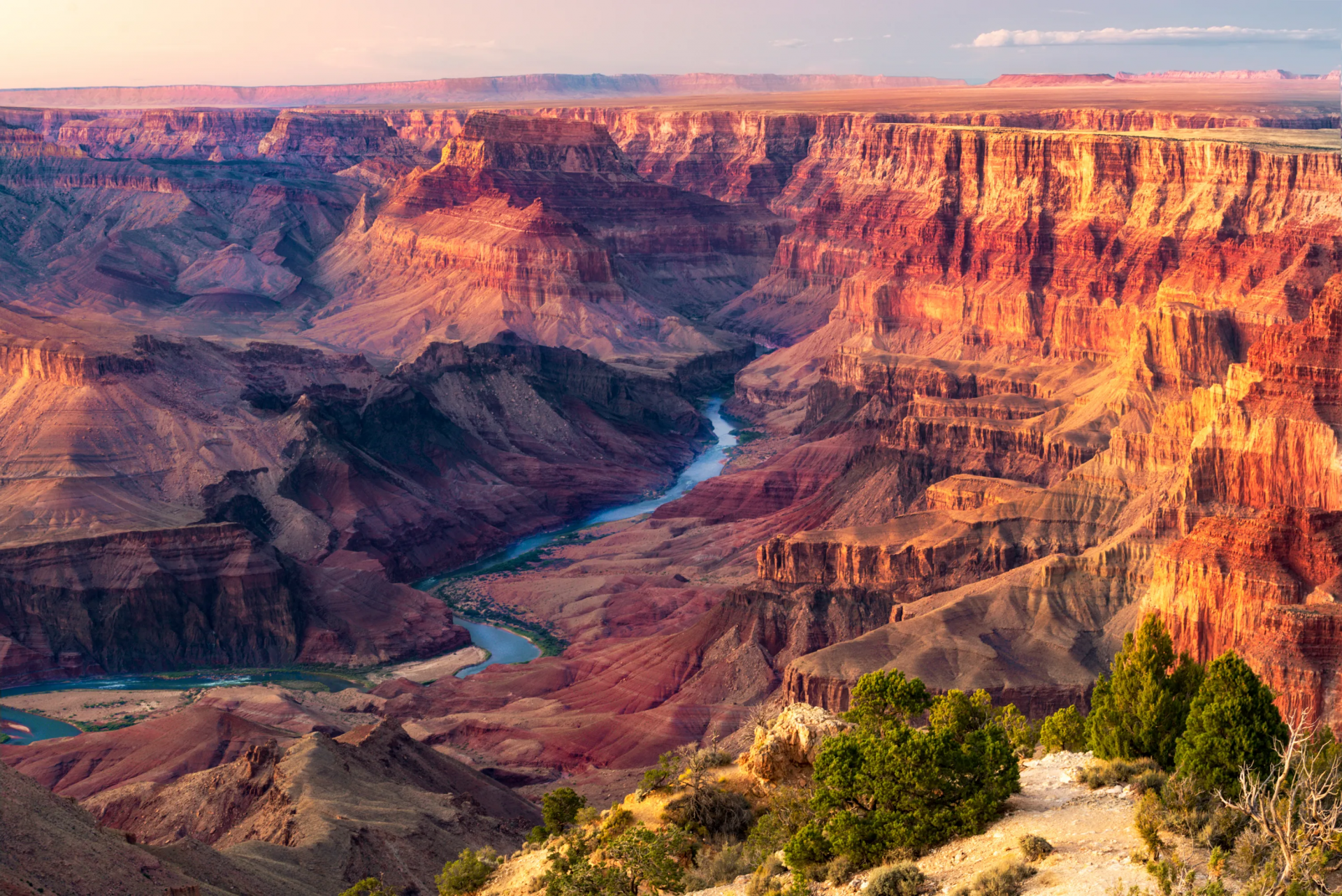 |
| Photo: Getty Images |
The fifteenth national park created in the United States is Grand Canyon National Park, which is situated in northwest Arizona. The primary draw of the park is the Grand Canyon, a gorge formed by the Colorado River and one of the Seven Wonders of the World. With over six million recreational visitors in 2017, the park—which spans 1,217,262 acres (1,901.972 square miles; 4,926.08 km2) of unincorporated land in Coconino and Mohave counties—ranked second in the United States only to Great Smoky Mountains National Park. In 1979, the Grand Canyon received the UNESCO World Heritage Site designation. The park commemorated its 100th anniversary on February 26, 2019.
The Grand Canyon gained widespread recognition among Americans in the 1880s following the construction of railroads, pioneers' infrastructure, and early tourism. When visiting the location in 1903, President Theodore Roosevelt said,
"I am inspired by the Grand Canyon. It is incomparable, unexplainable, and completely unmatched in the entire globe. Let this marvel of nature stay just as it is. Don't take anything away from its majesty, elegance, or splendor. It can't be made better. However, you can preserve it as the one magnificent sight that every American ought to witness for the benefit of their offspring as well as all future generations."
9. DENALI NATIONAL PARK (ALASKA)
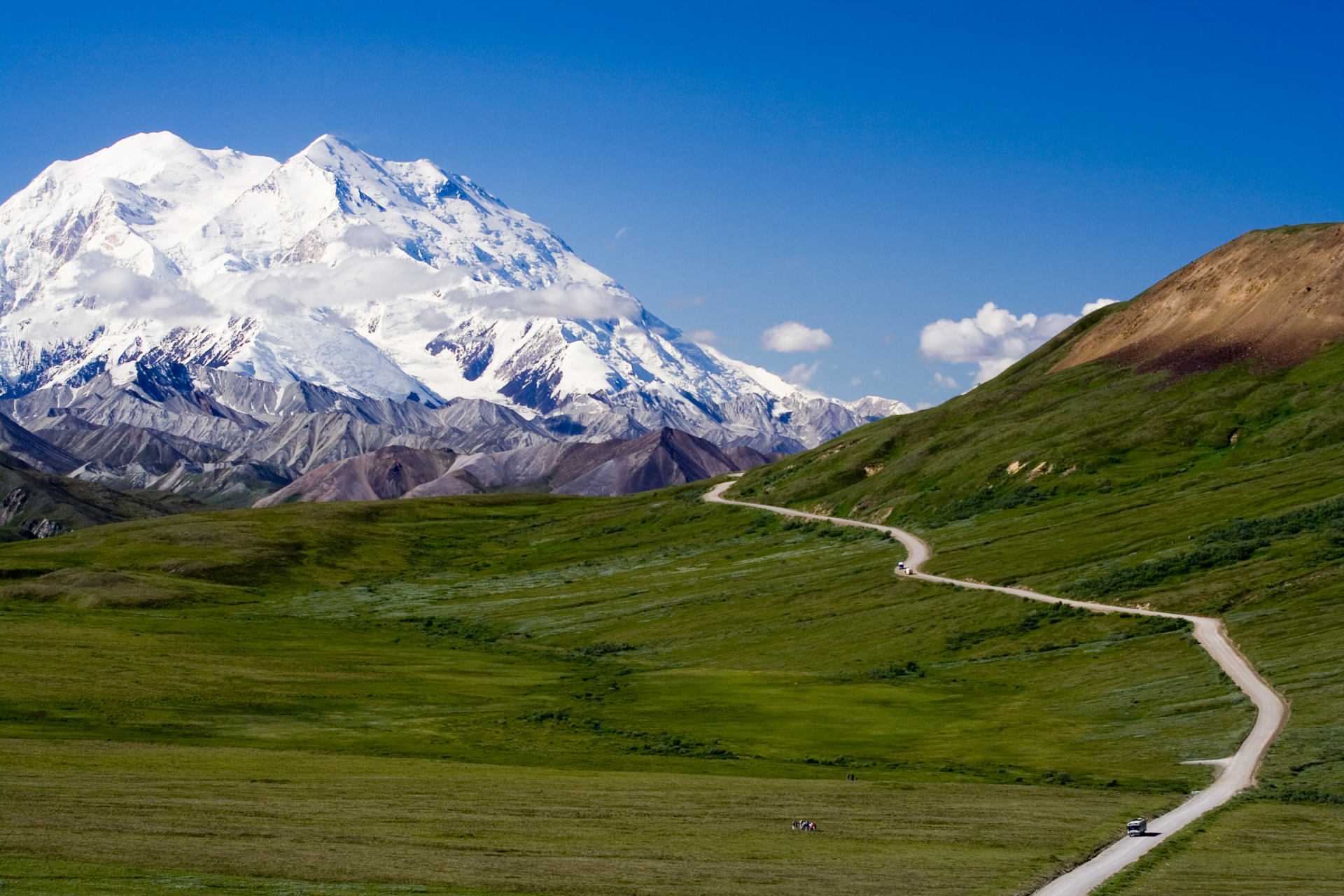 |
| Photo: Wikipedia |
Denali is simpler than most national parks in many ways. If you want to understand the park or plan a visit, here are some basic facts:
It is 92 miles long and runs from east to west and is known as the Denali Park Road (or simply "the park road"). It is a picturesque dirt and gravel road. It begins in a low, forested area, but as it travels west, it rises and falls through mountain passes (and along some precipitous mountain sides!).
The park entrance is located at the eastern end of the park, where the Denali Park Road meets Alaska Highway 3. The Denali entrance, like many rural roads and landmarks in Alaska, is designated by its mile along the highway. In this case, the park entrance is located at Highway 3 Mile 237 (Mile 0 is in Anchorage, where Highway 3 begins).
During the summer (May 20—mid-September), privately owned vehicles are permitted to drive the first 15 miles of the park road, to a location known as Savage River. Beyond Savage River, passengers must board a variety of narrated and non-narrated buses near the park entrance (or, in some cases, at their hotel outside of the park). Bus tours are an excellent way to see the park's landscape and wildlife.
This park was established by Congress in 1917 to protect Dall sheep from over-hunting. The size and purpose of the park expanded over time. The park has grown to around 6 million acres, and much of it must remain undeveloped. This means that the park's only trails are located near the park road, primarily near the park entrance. Denali, on the other hand, provides visitors with a once-in-a-lifetime opportunity to hike off trail in a wild landscape.
Discover: Top 20 Best & Most-Visited U.S National Parks For Upcoming Trips
8. YELLOWSTONE (WYOMING, MONTANA & IDAHO)
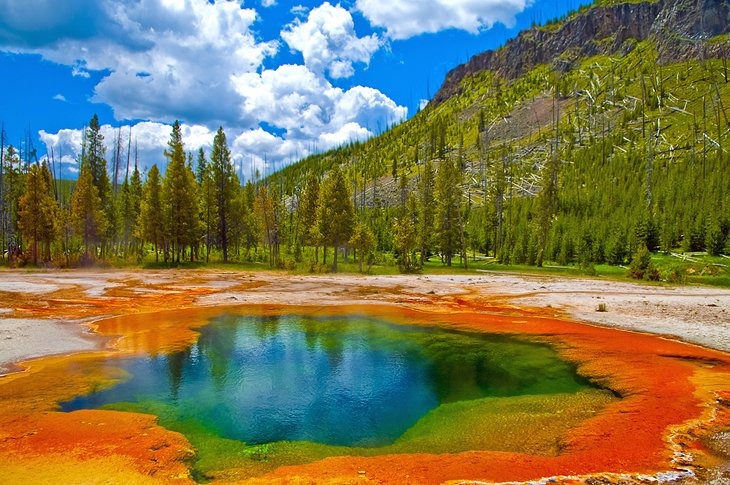 |
| Photo: Wikipedia |
Mostly situated in Wyoming's northwest corner and extending into Montana and Idaho, Yellowstone National Park is an American national park. On March 1, 1872, President Ulysses S. Grant signed the U.S. Congress's establishment into law. Many people believe that Yellowstone was the first national park in the world in addition to being the first national park in the United States.The park's most well-known geothermal feature, Old Faithful, is one of its many geothermal features. It is also well-known for its wildlife.10] The subalpine forest is the most prevalent biome, although it represents a variety of biomes. It is a component of the forests ecoregion of the South Central Rockies.
Although Native Americans have inhabited the Yellowstone region for at least 11,000 years, organized exploration did not start until the late 1860s, with the exception of mountain men's visits in the early to mid-19th century. The United States Department of the Interior was initially in charge of the park's management and oversight; Columbus Delano was the first Interior Secretary to take on this role. Eventually, though, the U.S. Army was given the authority to command Yellowstone for thirty years, from 1886 to 1916. The National Park Service was established the year before and took over park administration in 1917. More than a thousand archaeological sites have been investigated by researchers, and hundreds of buildings that have been constructed and preserved for their architectural and historical value.
7. HALEAKALA NATIONAL PARK (HAWAII)
 |
| Photo: Travel + Leisure |
This unique location preserves the connection between the land and its inhabitants while resonating with tales of both ancient and contemporary Hawaiian culture. Additionally, the park looks after endangered species, some of which are unique to the area. Visit this unique location and experience a rejuvenating hike through the backcountry amidst sub-tropical rain forest and imposing volcanic landscapes.
Situated in the state of Hawaii on the island of Maui, Haleakalā National Park is an American national park. The park, which is named after the dormant volcano Haleakalā that lies within its borders, is 33,265 acres (52.0 sq mi; 134.6 km2) in size, with 24,719 acres (38.6 sq mi; 100.0 km2) designated as a wilderness area. In 1976, the area was declared a national park, and in 2005, its boundaries were extended.
6. ZION NATIONAL PARK (UTAH)
 |
| Photo: National Geographic |
The American national park Zion is situated close to the town of Springdale in southwest Utah. Zion Canyon, which stretches for 15 miles (24 km) and reaches depths of up to 2,640 feet (800 meters), is a notable feature of the 229 square miles (590 km2) park. The North Fork of the Virgin River eroded the Navajo Sandstone, which gives the canyon walls their reddish-tan color. At Coalpits Wash, 3,666 feet (1,117 meters) is the park's lowest point, and Horse Ranch Mountain, 8,726 feet (2,660 meters) is its highest point. The park, which is situated where the Colorado Plateau, Great Basin, and Mojave Desert converge, has a distinct topography and a range of life zones that support an uncommon diversity of flora and fauna.
The park's four life zones—desert, riparian, woodland, and coniferous forest—are home to a wide variety of plant species, 289 species of birds, 75 mammals (including 19 species of bat), and 32 reptiles. Mountains, canyons, buttes, mesas, monoliths, rivers, slot canyons, and naturally occurring arches can all be found in Zion National Park.
5. GLACIER BAY NATIONAL PARK (ALASKA)
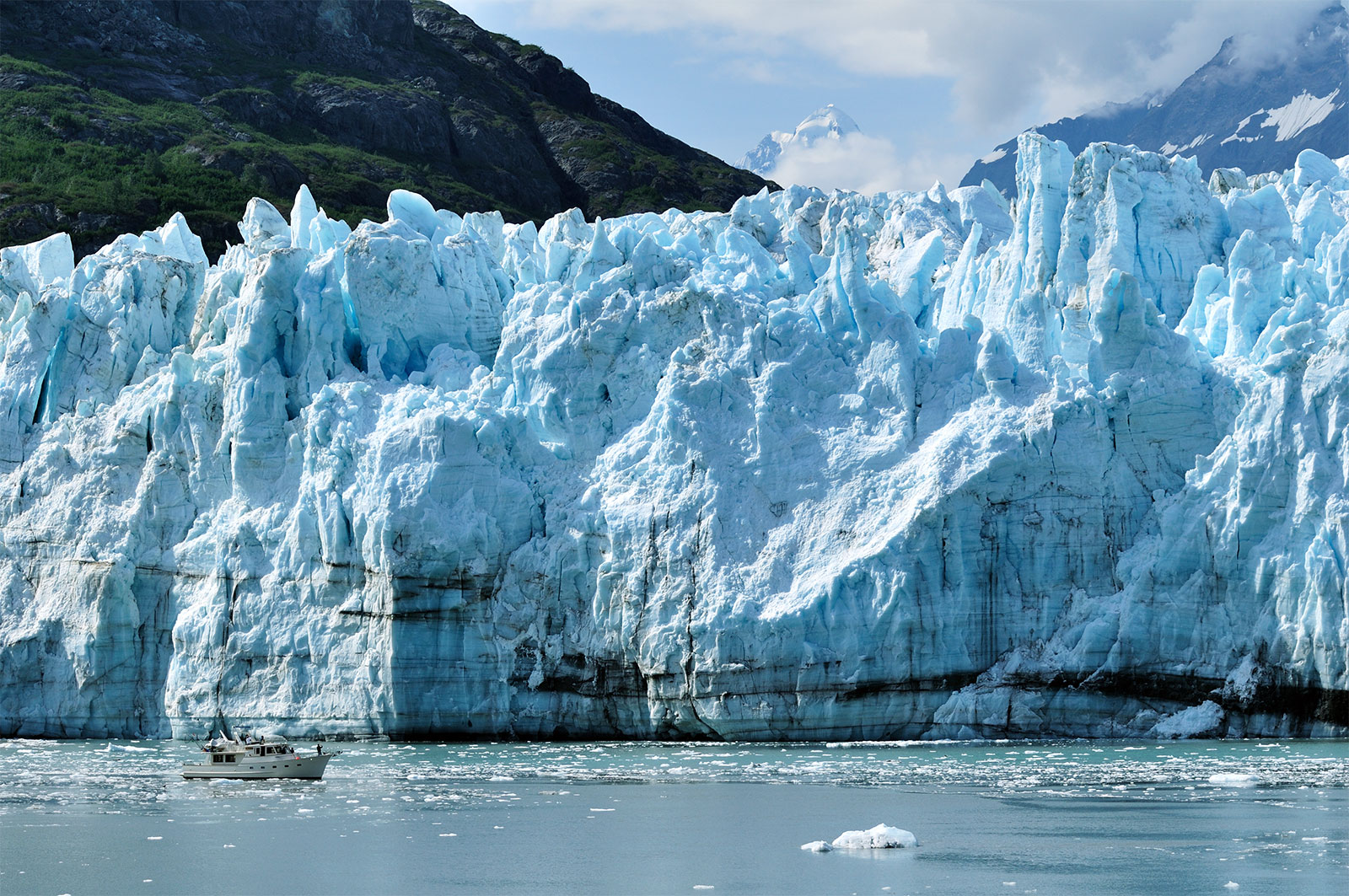 |
| Photo: Brittanica |
West of Juneau in Southeast Alaska sits the American national park known as Glacier Bay National Park and Preserve. On February 25, 1925, President Calvin Coolidge declared the region surrounding Glacier Bay a national monument in accordance with the Antiquities Act.*[4] President Jimmy Carter expanded the national monument in 1978. On December 2, 1980, the Alaska National Interest Lands Conservation Act (ANILCA) created Glacier Bay National Park and Preserve and expanded the national monument by 523,000 acres (817.2 sq mi; 2,116.5 km2).(5) To the immediate northwest of the park, the national preserve covers 58,406 acres (91.3 sq mi; 236.4 km2) of public land, protecting a section of the Alsek River and its habitats for fish and wildlife while permitting sport hunting.
In 1979, Glacier Bay was included in the binational UNESCO World Heritage Site, and in 1986, it was designated as a Biosphere Reserve. In 1994, the National Park Service committed to managing the protected area in collaboration with Hoonah and Yakutat Tlingit Native American organizations. 2,770,000 acres (4,328 sq mi; 11,210 km2) of the 3,223,384 acres (5,037 sq mi; 13,045 km2) that make up the park and preserve are designated as wilderness areas.
4. OLYMPIC NATIONAL PARK (WASHINGTON)
 |
| Photo: Sunset Magazine |
Olympic National Park is a national park in the United States that is situated on the Olympic Peninsula in the State of Washington. The park is divided into four sections: the alpine regions, the temperate rainforest on the west side, the Pacific coastline, and the drier east side forests. Three different ecosystems can be found within the park: the untamed Pacific coast, temperate forest, and subalpine forest with wildflower meadow.
On March 2, 1909, President Theodore Roosevelt declared the park to be Mount Olympus National Monument. On June 29, 1938, President Franklin D. Roosevelt and Congress renamed the monument as a national park. Olympic National Park received two UNESCO designations: an International Biosphere Reserve in 1976 and a World Heritage Site in 1981. Congress declared ninety-five percent of the park to be Olympic Wilderness in 1988.
3. GRAND TETON NATIONAL PARK (WYOMING)
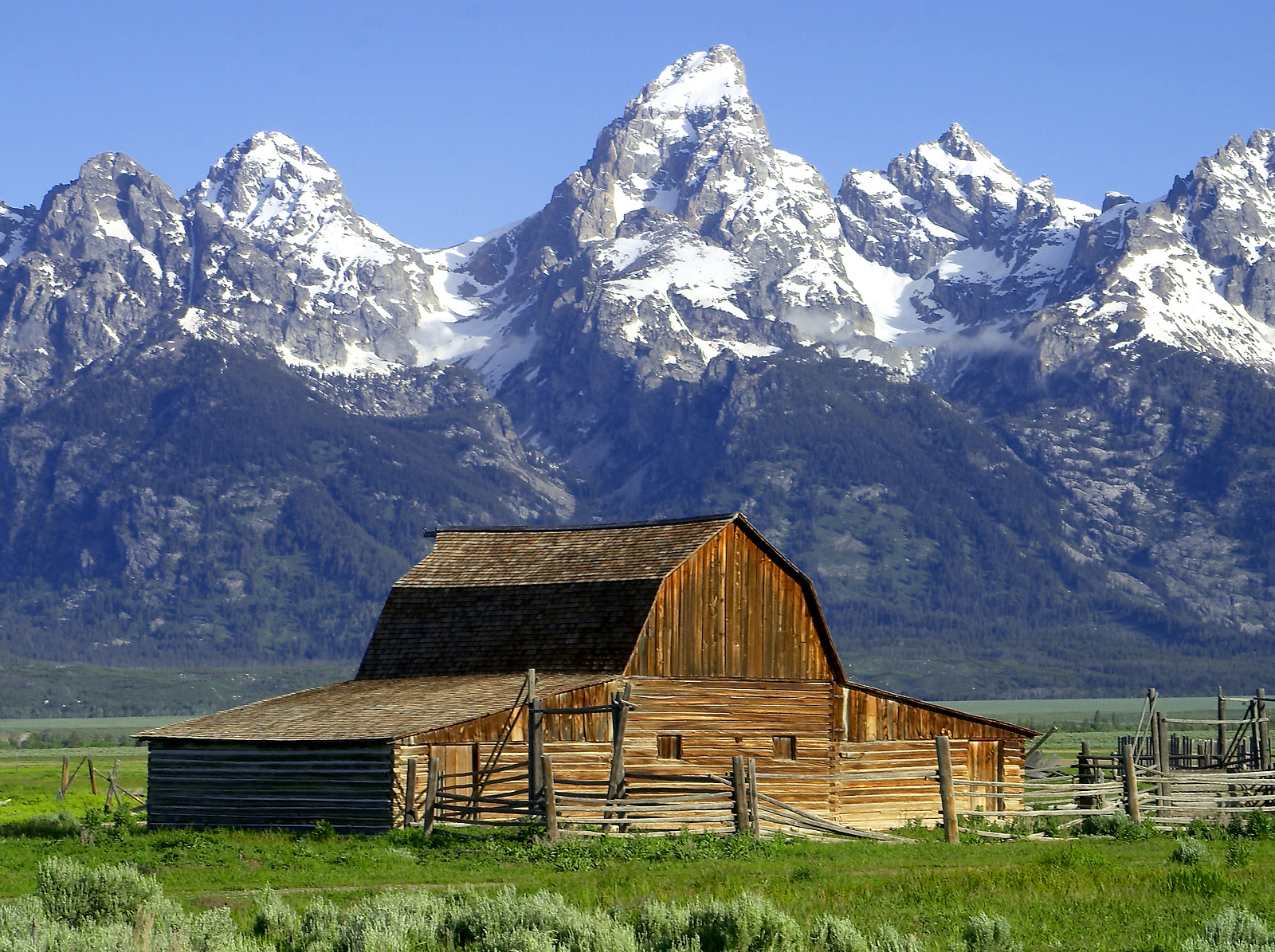 |
| Photo: Wikipedia |
Located in northwest Wyoming, Grand Teton National Park is an American national park. With an approximate area of 310,000 acres (480 sq mi; 130,000 ha; 1,300 km2), the park encompasses the majority of the northern regions of the Jackson Hole valley and the main peaks of the 40-mile (64 km) Teton Range. The John D. Rockefeller Jr. Memorial Parkway, which is maintained by the National Park Service, connects Grand Teton National Park to Yellowstone National Park, which is located just 10 miles (16 km) to the south. These three protected areas make up the nearly 18,000,000-acre (7,300,000 ha) Greater Yellowstone Ecosystem, one of the largest intact mid-latitude temperate ecosystems in the world, along with the surrounding national forests.
The Grand Teton region's human history began at least 11,000 years ago, when Paleo-Indians, the first nomadic hunter-gatherers, started moving into the area during the warmer months in search of food and supplies. The eastern Shoshone people were first encountered by white explorers in the early 1800s. Fur trading companies flocked to the area between 1810 and 1840, competing for control of the lucrative beaver pelt trade. As a spin-off from Yellowstone exploration, U.S. government trips to the area began in the middle of the 19th century, and the first white permanent settlers arrived in Jackson Hole in the 1880s.
2. YOSEMITE NATIONAL PARK (CALIFORNIA)
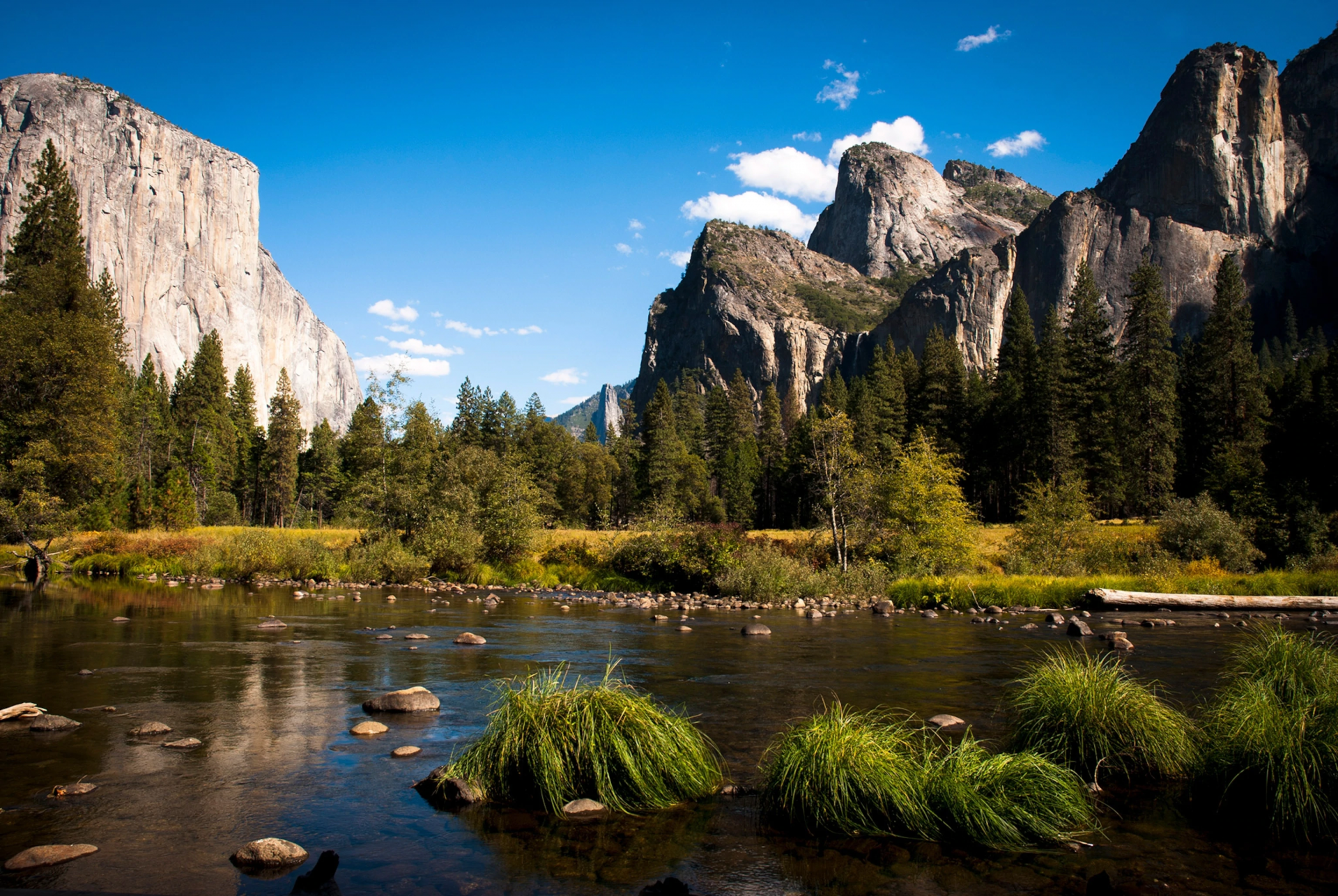 |
| Photo: National Geographic |
Stanislaus National Forest borders Yosemite National Park on the northwest and the Sierra National Forest on the southeast. Yosemite National Park (/joʊˈsɛmɪti/ yoh-SEM-it-ee) is an American national park located in Northern California. The National Park Service is in charge of overseeing the 748,436-acre park, which spans four counties: Tuolumne and Mariposa in the center, Mono to the north and east, and Madera County to the south. Yosemite is renowned worldwide for its granite cliffs, waterfalls, crystal-clear streams, enormous sequoia groves, lakes, mountains, meadows, glaciers, and biological diversity. It was named a World Heritage Site in 1984. The park is almost entirely designated as wilderness.
Yosemite National Park is home to a wide variety of flora and fauna and is considered one of the largest and least fragmented habitat blocks in the Sierra Nevada. There are five main vegetation zones in the park: chaparral and oak woodland, lower montane forest, upper montane forest, subalpine zone, and alpine. The park's elevation ranges from 2,127 to 13,114 feet (648 to 3,997 m). Approximately 50% of the 7,000 plant species found in California are found in the Sierra Nevada, and over 20% are found in Yosemite National Park. More than 160 rare plants can find suitable habitat in the park, which also features unusual local geologic formations and distinctive soils that define the limited ranges that many of these plants occupy.
1. GLACIER NATIONAL PARK (MONTANA)
 |
| Photo: Getty |
Situated near the Canadian provinces of Alberta and British Columbia, Glacier National Park is an American national park situated in northwest Montana on the border between the United States and Canada. More than 130 named lakes, hundreds of animal species, more than 1,000 distinct plant species, and portions of two mountain ranges (sub-ranges of the Rocky Mountains) are all found within the park's more than 1 million acres (4,000 km2). The centerpiece of what has been called the "Crown of the Continent Ecosystem," a region of protected land covering 16,000 square miles (41,000 km2), is this enormous, pristine ecosystem.
Top 10 Largest National Parks in America
| Rank | Park | Area (acres) | Location |
|---|---|---|---|
| 1 | Wrangell-St. Elias | 8,323,146.48 | Nearest city: Copper Center, Alaska |
| 2 | Gates of the Arctic | 7,523,897.45 | Bettles, Alaska |
| 3 | Denali | 4,740,911.16 | Denali Borough and Matanuska-Susitna Borough, Alaska;Nearest city: Healy |
| 4 | Katmai | 3,674,529.33 | Nearest city: King Salmon |
| 5 | Death Valley | 3,408,406.72 | California and Nevada;Nearest city: Lone Pine, California; Beatty, Nevada |
| 6 | Glacier Bay | 3,223,383.43 | Nearest city: Juneau, Alaska |
| 7 | Lake Clark | 2,619,816.49 | Nearest city: Anchorage, Alaska |
| 8 | Yellowstone | 2,219,790.71 | Nearest city: West Yellowstone, Montana |
| 9 | Kobuk Valley | 1,750,716.16 | Northwest Arctic Borough, AlaskaNearest city: Kotzebue |
| 10 | Everglades | 1,508,938 | Nearest city: Florida City, Everglades City, United States |
 Top 10 Most Popular Sports in The US Top 10 Most Popular Sports in The US Which is the most popular sport in America today? Here we have a list of ten of the most popular sports in the USA. |
 Top 10 Baby Names Most Popular Among Billionaires Top 10 Baby Names Most Popular Among Billionaires Choosing a name for your baby is one of the trickiest decisions a parent will have to make. Check out a list of top 10 ... |
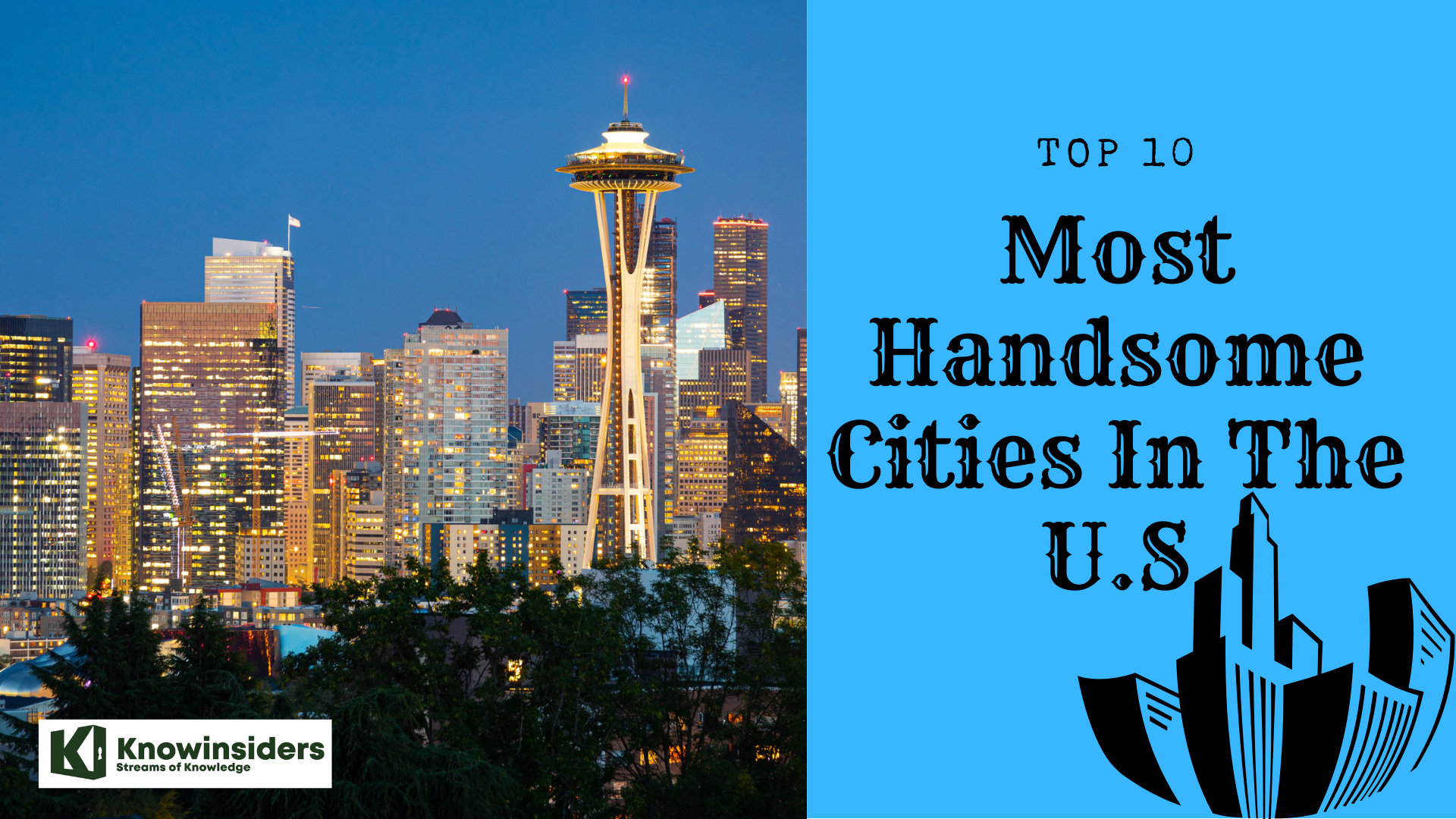 Top 10 Most Handsome Cities In The US Top 10 Most Handsome Cities In The US Check our the list of top 10 most handsome cities in the U.S in 2021. |
 Top 10 Most Wanted Fugitives By FBI In The US Top 10 Most Wanted Fugitives By FBI In The US There are very dangerous people out there that can cause harm to the society, and here is the top 10 most wanted fugitives by the ... |


